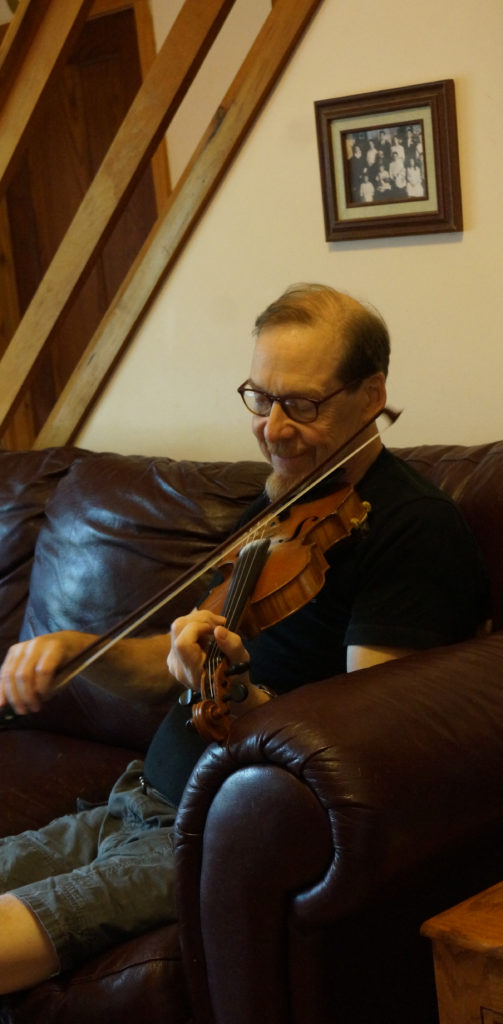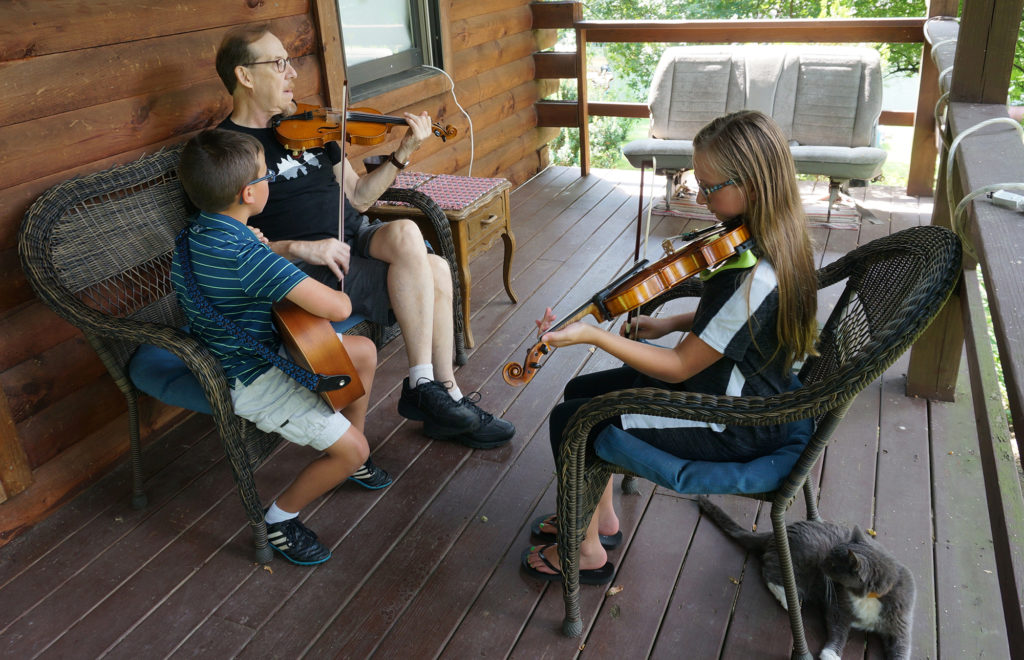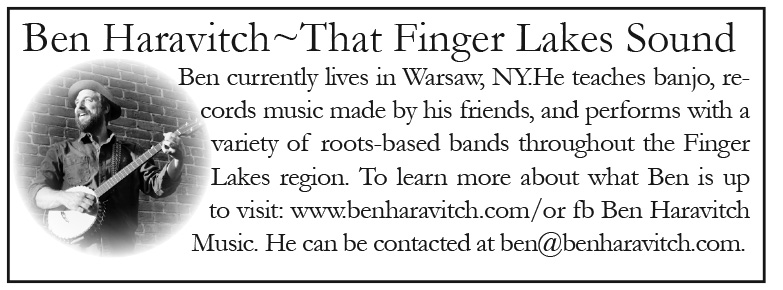That Finger Lakes Sound: Irish music-A local, living tradition
by Ben Haravitch –
The idea of traditional music means different things to different people. Some musicians feel it is their duty to build on traditions and express them in their own way.

Others feel their role is to preserve music exactly as it has been played before. There is no wrong way to go about it. One thing that seems to tie all forms of traditional music together is connection. Whether the musicians are connected to each other in a groove, or a single musician connects a room full of strangers together in dance, the music serves to include. To embrace. That is exactly what Joe Dady has done for the last fifty some years, ever since he got his first banjo at the age of twelve.
Joe and his brother John, the Dady Brothers, have provided our region with some of the most entertaining and inclusive folk music playing locally everywhere from prisons to the Hochstein Performance Hall. Though fluent with many styles, they may be best known as Irish musicians. I asked Joe how he started playing Irish music in the first place.
“We started going to the Irish Inn in Charlotte when we were teenagers. The Carroll brothers who owned the Inn would bring in a lot of local and regional acts. They were also responsible for bringing a lot of bands from Ireland over.” A member of one of these groups, Bill Fleming of the Emmigrants, saw that Joe and John really wanted to learn the music. He took them over to the Friendship Tavern on Lake Avenue. “We walk in and there’re fifteen or twenty fiddles, accordions, penny whistles, 4-string banjos. We would pick up tips and bits, we had little tape recorders we brought in there. We just tried to glean whatever we could. We were chewing it up and spitting it out! Folks like Mitzie Collins (a curator of the local folk culture) and these Irish stalwarts were very supportive of us – Jimmy Finucane, Ted McGraw, Marty O’Keefe.” I asked Joe to elaborate on O’Keefe, a local fiddler who passed away only recently at 103 years old. “Marty was the real deal. He was charismatic with his music, he had this glimmer in his eye, never had anything bad to say about anybody.”
O’Keefe immigrated to New York in 1947. With dwindling economic opportunities in post-war Ireland, many from the emerald isle came to the States during that time. Dady explains that O’Keefe would say that he “couldn’t even carry water” for some of the famous Irish musicians in his hometown, yet he was revered when he would travel back home. “He knew some of the old-timers from there, and just like John and I would follow him around when we were kids, it was the same situation with him and those hotshots in Ireland.”
Joe continues with how the music is passed on from generation to generation, “That’s how the tradition goes: you see something, you hear somebody play something, you work on it, you come back, and they say ‘well, that’s not really how that song goes.’ You can be stubborn and say, ‘well that’s the way I’m gonna play it’, but if you want to jam with people, you’ve got to play it how the song goes in order to make it happen. Traditional Irish music in a session is usually very linear. Everyone’s playing the melody.”
Buffalo fiddler, Charlie Coughlin, of the traditional Irish group Crikwater, agrees. “Depending on where in Ireland a musician is from, they may play a tune slightly differently, with different ornamentation, but the tune itself tends to remain consistent.” Coughlin jokes, “On the west coast of Ireland the landscape is very hilly, and they play their fiddle tunes like that – with many slurs and ornaments.” Charlie believes the main melody line of a tune remains mostly consistent from place to place not so much because of a reverence for tradition, he believes it’s more subconscious than that. “The melody is what connects the players. Musicians who have never met can come together in a session, listen to each other and play the same tune as a way of connecting and teaching.”

This method of teaching is important for Irish musicians. To keep the tradition alive, a musician demonstrates how they learned the tune, and therefore how it was taught to the person who taught them, and all the way back. This allows beginners a quick connection to the old-timers. “That’s how you spread it around,” explains Dady. “People who really want to get into the music, you help them out because there are people who helped you out along the line, and you want to do the same thing. There’s this student that comes to me, Shealeigh Brown, she’s thirteen years old, and she’s going to be amazing because she loves the fiddle, she learns from me by ear, we never write any notes down, we do it by the aural tradition, that’s how we carry it on.”
There are opportunities almost every night of the week for anyone who is interested in learning Irish music in this way. And you don’t even have to be Irish! Similarly, you don’t have to participate in the music, you might like to simply attend a session, have a drink, and enjoy the living tradition. The Rochester Irish Musician’s Association maintains a great website with an up-to-date calendar of sessions and performances at www.irishrochester.weebly.com. Once a week there is a beginners’ session where Dady says “The leader, an accordion or fiddle player will typically play a tune at half speed for beginners to pick it up. They’re very supportive of the beginners.”
Joe Dady reflects on the beauty of the music: “There’s something about Irish music. It makes you happy and sad at the same time. It ties in to the pathos of the struggle that Ireland has had through the years. Look back in the history of Ireland and America, some of the greatest music has come out of the depressions and struggle.”
